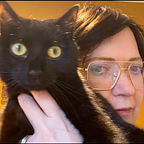What Did the Forbidden Tree Want?
I grew up being taught the Bible as fact at church, at home, and at school, with the same emphasis and weight that most children learn history. Although I am not a believer now, inevitably I remain in conversation with the stories I learned back then, and I find myself arguing with them now, as I did in my childhood, from the inside, a perspective not really possible for a person who was never taught the text as a kind of law, as a guide for how to live in the present and a blueprint for how society should be structured. I find Mark Twain’s childhood biography of Satan so compelling and delightful for this reason. Though an atheist as an adult, Twain grew up in the church and was forever after able to engage with it as a person who’d considered it, rejected it, and left it behind, rather than as someone incredulously mocking it from the outside.
When I was younger, I tended to reimagine the Biblical creation story from Eve’s perspective. After reading and rereading the beginning of Genesis in many translations, I concluded (as I wrote on my blog many years ago) that God excoriated Eve more roundly and punished her more severely than Adam not because she was more wicked, but because she represented an actual threat. Seeking knowledge, she chose to eat the fruit, whereas Adam ate passively and only because she handed the fruit to him and had tried it first. Adam would never of his own accord have betrayed or competed with God the way Satan did. Eve, on the other hand, aspired to be godlike.
Let me pause here to say that I realize it’s a strange exercise to argue about the true meanings of a text that is (in the eyes of those like myself who do not embrace the Abrahamic faiths as truth) fictional. Still, the person or people who came up with this text in the first place had a purpose in creating and sharing the story, and I decided this was the subtext, that the woman was more dangerous than the man because she sought the knowledge forbidden to her by god, knowledge that set god apart from humans.
I still believe this, but more recently I’ve become interested in the type of knowledge being forbidden to Eve and Adam. In the era of scientific materialism, when we think of knowledge, we (in much of the West) tend to think of physicists and lawyers, of libraries and databases, of experiments in a lab and mechanical inventions. But what if the knowledge being forbidden to Eve was something else, a kind of deeper communion with and understanding of the tree and the fruit itself, an awareness of her kinship with them?
Like many who are mourning climate change and have read The Secret Life of Trees and The Overstory and other recent books that ponder beyond-human forms of interconnectedness, I’ve begun to embrace a broader understanding of kinship and to grieve the loss of earth connection that once came so much more naturally to humanity across the world. Nowadays I find myself imagining the Garden of Eden story from the perspective of the forbidden tree. To me that version of the story is the most tragic of all.
